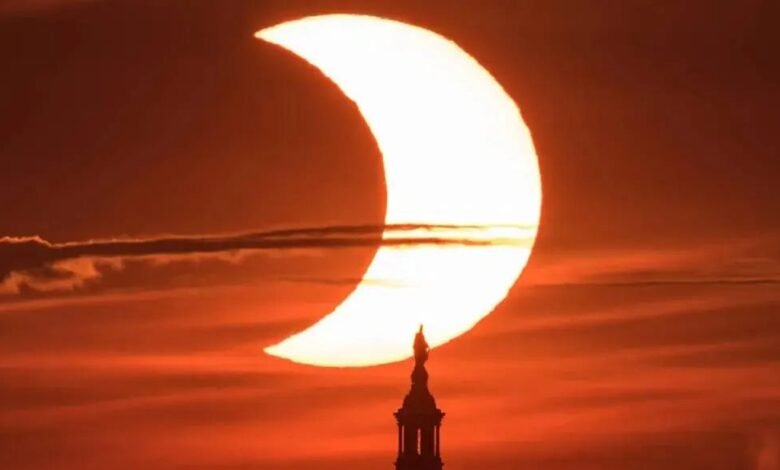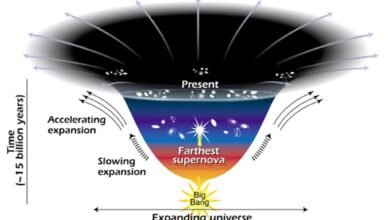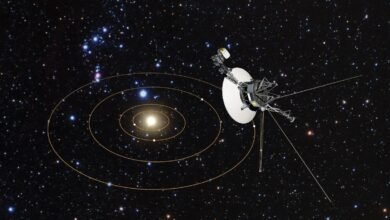
Even if you aren’t in the path of totality, you can still use the solar eclipse to measure how long it takes the Moon to orbit Earth.
A solar eclipse is a very special physical phenomenon. The Moon orbits the Earth while the Earth-Moon system orbits the Sun, and every so often, all three bodies align. When this alignment occurs when the Moon is on the far side of the Earth from the Sun, we get a lunar eclipse: where the Moon passes into Earth’s shadow. But when the Moon passes between the Earth and Sun and all three bodies line up, the Moon’s shadow can fall onto the Earth itself, creating the phenomenon of a total solar eclipse. To anyone on Earth who happens to be located along the path of that shadow — in the path of totality — it’s an experience unlike any other.
From the perspective of someone on the surface of the Earth in or even just near the path of totality, the Moon will appear to first touch the disk of the Sun at a moment called “first contact,” then will partially or even completely cover up the Sun, and finally will move off of the Sun until the moment of “last contact,” when the full solar disk is exposed bare once again. Remarkably, just by measuring the time from first contact until last contact (even outside the path of…
Source link






